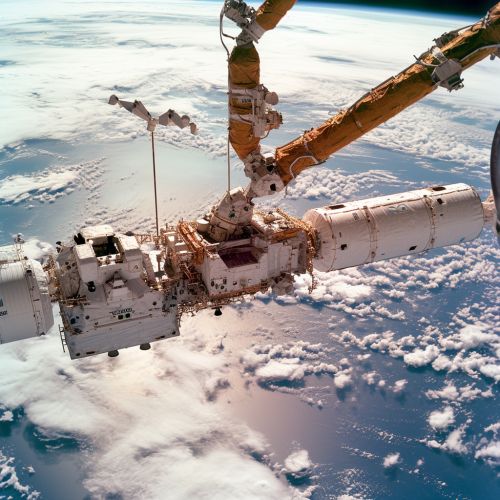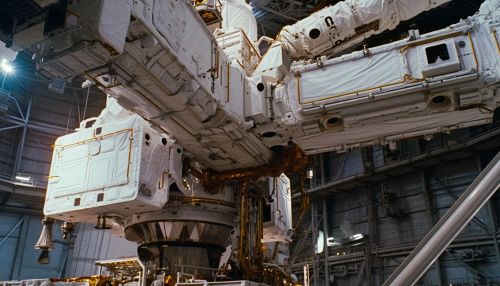Canadarm2
Overview
The Canadarm2, also known as the Space Station Remote Manipulator System (SSRMS), is a robotic system on board the International Space Station (ISS). It was launched into space aboard the Space Shuttle Endeavour on April 19, 2001, as part of STS-100. This sophisticated robotic arm plays a crucial role in station assembly and maintenance; it moves equipment and supplies around the station, supports astronauts working in space, and services instruments and other payloads attached to the ISS.
Design and Development
The Canadarm2 was built by MDA Space Missions for the Canadian Space Agency (CSA). It was designed to be larger, more advanced, and more flexible than its predecessor, the Canadarm, which was used on the Space Shuttle. The Canadarm2 is 17.6 meters long when fully extended and has seven motorized joints. This allows it to move in multiple directions and with greater precision than the original Canadarm.


The Canadarm2's design also includes a unique feature: unlike most robotic arms, both ends of the Canadarm2 can be used as a base or as a manipulator. This allows it to "walk" end-over-end around the exterior of the ISS, a capability that greatly extends its reach and operational flexibility.
Operation
The Canadarm2 is operated by astronauts aboard the ISS, who use a series of cameras and sensors to control its movements. The arm can also be operated remotely from the ground by mission control at the Johnson Space Center in Houston, Texas, or the CSA's headquarters in Saint-Hubert, Quebec.
The Canadarm2's primary function is to assist in maintaining the ISS. This includes moving large payloads, installing new modules, and performing repairs. The arm is also used to capture and dock incoming spacecraft, such as the SpaceX Dragon and the Cygnus, which deliver supplies to the ISS.
Contributions to Space Exploration
The Canadarm2 has made significant contributions to space exploration. Its capabilities have been instrumental in the assembly of the ISS, the largest human-made structure in space. The arm's precision and flexibility have also enabled astronauts to perform delicate tasks outside the station, reducing the need for risky spacewalks.
In addition to its operational role, the Canadarm2 has also contributed to scientific research. For example, it has been used to deploy and retrieve various scientific experiments and instruments. The arm's unique design and capabilities have also provided valuable insights into the development of robotic systems for use in space.
Future Applications
The success of the Canadarm2 has led to the development of more advanced robotic systems for use in space. These include the Dextre, a smaller, more dexterous robot that works in conjunction with the Canadarm2, and the Mobile Servicing System, a platform that moves along the ISS and serves as a base for the Canadarm2 and Dextre.
The technology used in the Canadarm2 is also being applied to other areas. For example, it has been used to develop robotic systems for surgical applications, such as the NeuroArm, a robot designed to assist in delicate brain surgery.
